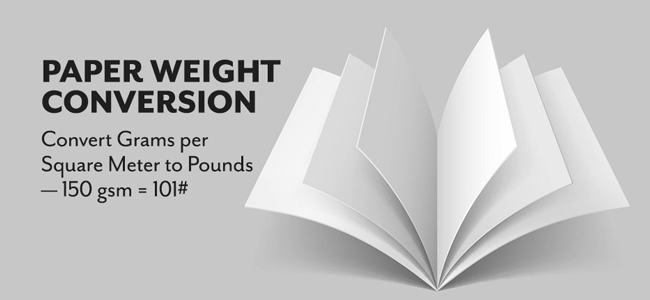Paper weight is an important component to consider before made order for your artwork printing. Heavier media often conveys quality and provides durability. Unfortunately, sorting through the various methods of labeling a paper’s weight is not always straightforward. First, there are three common methods for specifying paper weight and thickness: U.S. Basis Weight (Bond, Book, Index, Cover, Tag, Points, Offset ), Metric weight (GSM or G/m2) and, often interchangeable, Points (an actual Caliper reading of the paper thickness).
The U.S. Basis (not basic) Weights, are the most confusing, simply because the same paper can yield different values based on the “Basis Weight” applied while manufacturing the paper. And higher values don’t always equate to heavier/thicker print media. For example, a sheet of 100lb Text paper is actually much thinner than an 80lb Cover stock.
The “Basis Weight” is defined as the weight of 500 sheets of paper in its basic unit uncut size, which means before being cut to Letter size or Legal size, the paper is weighed and categorized. The most common sizes, some of which you may recognize, are Bond, Text, Book, Cover, Index and Tag. An uncut sheet of Bond paper is 17 x 22 inches, while an uncut sheet of Cover paper is 20 x 26 inches. If 500 sheets of Bond paper (17 x 22 inches) weigh 20 lbs, then a ream of paper cut to Letter size will be labeled as 20 lb. And if 500 sheets of Cover paper (20 x 26 inches) weigh 65 lbs, then a ream of this paper trimmed to tabloid size would be marked as 65lb.
Metric weight (GSM or G/m2 measurement that is nearly always displayed alongside the U.S. Basis Weight. The metric measurement (sometimes called Grammage) is the actual weight of one sheet of media cut 1 x 1 meter square. Because the same size sheet is always being weighed, GSM (grams per square meter) provides a more uniform scale to judge a paper’s weight and thickness.
Having given an explanation of paper weights used internationally and in the US this page covers conversions between weights and stock paper types used in the US and the weights used internationally. Below are tables for each stock type covering the commonly found weights within each Lb type and its Gsm equivalent :
Coated — Gloss Art Paper and Matte Artpaper
- 54 lb = 80 gsm
- 68 lb = 100 gsm
- 82 lb = 120 gsm
- 101 lb = 150 gsm
Uncoated — Plain Paper and HVS / Copy Paper
- 54 lb = 80 gsm
- 68 lb = 100 gsm
- 81 lb = 120 gsm
- 95 lb = 140 gsm
- 122 lb = 180 gsm
Perfect Bound — Art board /Art carton and Plain Paper
- 9 pt = 210 gsm
- 10 pt = 230 gsm
- 12 pt= 260 gsm
- 14 pt = 310 gsm
- 16 pt = 350 gsm
- 18 pt = 400 gsm
Hardcover board — Grey / Yellow Board cartoon
- 60 pt = 1.4 mm = 1,000 gsm
- 65 pt = 1.8 mm = 1,100 gsm
- 70 pt = 2.0 mm = 1,200 gsm
- 80 pt = 2.25 mm = 1,400 gsm
- 88 pt = 2.5 mm = 1,600 gsm
- 92 pt = 2.8 mm = 1,700 gsm
- 98 pt = 3.0 mm = 1,800 gsm
